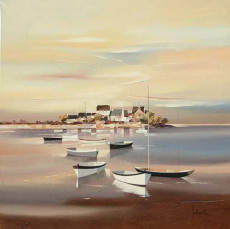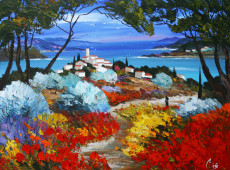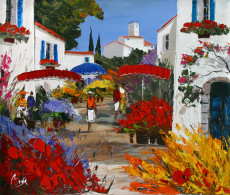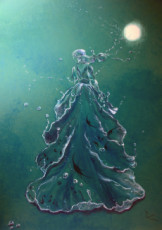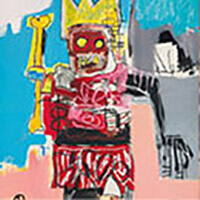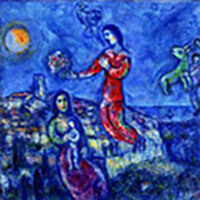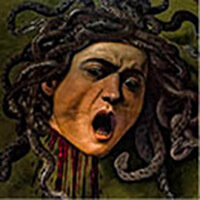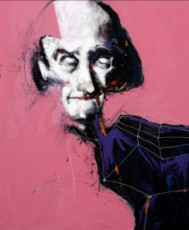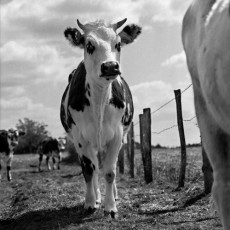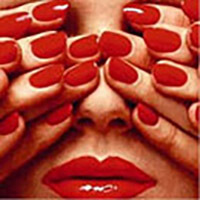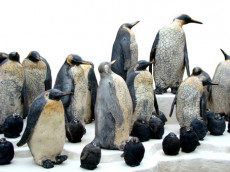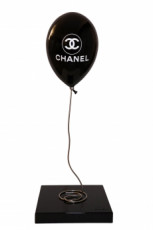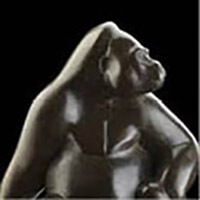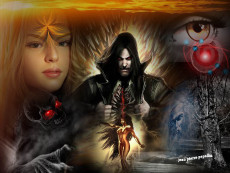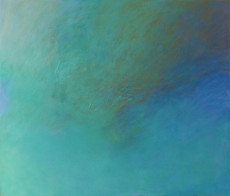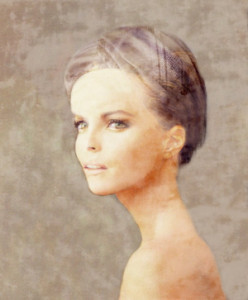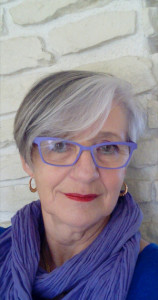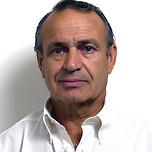
Escultura
Sculpture is one of the most diverse, fascinating and varied artistic forms in Western art. gigantic sculpted pieces from ancient Greece to the abstract sculptures of contemporary art, from figurines of prehistoric civilizations to cinematic sculptures. ticks from the 20th century, this art is as diverse as it is intriguing.(...)
The history of sculpture
Sculptural art began to the Upper Paleolithic with a small figure known as Löwenmensch. It is considered to be more than 40,000 years old.
Since this Paleolithic figure discovered in a German cave until the 19th century, the sculpture has been widely used. dominated by a whole series of works (the Mesopotamian statues, the Hellenistic works, Roman art , Romanesque and Gothic reliefs and architectural art).
Religion, spirituality and rituals were the most recurring themes. The Great Sphinx of Egypt, statues of Greek and Roman deities, sculpted pieces and reliefs of Roman and Gothic art, such as Chartres Cathedral, are all fundamentally symbols religious. They were simply commissioned and built by craftsmen for people with money (i.e. the Church).
In fact, the link between sculpture and religion has not been established. destroyed before the High Renaissance. While religious iconography was used by many sculptors, this art form has become increasingly interested in art. Anatomically accurate and realistic depictions from the 14th to 16th centuries.
This transformation changed the the course of the history of sculpture. From baroque to rococo, via neoclassicism and modernism, she focused on represent shapes accurately.
If Auguste Rodin was the sculptor who triggered the movement the movement of modern sculpture, Constantin Brancusi was at the heart of the movement. the person who gave à This art form gave her the impetus she needed to break away from the representation of form.
By reminding people that painting and sculpture did not have to be Being realistic, his abstract art opened the way to contemporary sculptural art.
Materials
The sculpture can be made with most 3D modular materials. However, some such as rock, wood, plaster, ceramics, metal and ivory present exceptional artistic properties and have been commonly used by sculptors. Therefore, this art has been widely used. carried out using four main procedures over the centuries: rock cutting, wood carving, metal sculpture casting and ceramic modulation. The sculpture at agrave; mixed technique chryséphantine(using both gold and ivory) was a rare category of work reserved for great cults.
Wooden sculpture
Wooden sculpture is the most archaic and durable form of sculptural art. It experienced its golden age in the West, particularly in Germany, at the era of medieval art. The wood was then covered with plaster stucco and painted. the manner of ancient Egyptian art.
The Věstonická Venuše, a ceramic sculpture from the Late Perigordian period, is the first known ceramic sculpture. The clay army highlighting the army of Qin Shi Huang is, as for her, the most popular example of ceramic sculpture.
During the period 1150-1300, the largest body of stone sculpture was produced in the period 1150-1300. created for French cathedrals. The magmatic rocks, in strata and their derivatives have all been discovered. carved. Artists of the time used the Luna marble in Roman art and that of the Renaissance in Italy.
Bronze sculpture appeared separately in America, Asia and Africa. Casting a bronze sculpture requires the creation of a shape to match. made from clay, wax or plaster, which will be removed later. This method was used to create the Gate of Hell by Auguste Rodin.
- Other materials
Ivory, precious metals, and animal baleen are other classic materials used to make decorations. build metal sculptures or sculptures mixed media.
Mesopotamian sculpted pieces have been produced in the past. discovered in the royal tombs of Ur, made of copper, gold, limestone and other components. As another example of work with various materials, there is the Golden Bull of Maikop, a gold figure from the North Caucasus.
Types of sculpture
Depending on the support, we distinguish the self-supporting sculpture, which is only supported by a lower pillar; and relief sculpture, a form of art presenting a carved design on a hard background. As a self-supporting work, we can cite the sculpture mixed technique of Zeus à Olympia.
This art form can also be divided into categories depending on the subject matter. A statue is most often a 3-dimensional figurative image of an individual, but a bust, such as that of Empress Vibia Sabina, represents only the upper part of the body. An equestrian sculpture is a statue of a human being riding a horse, like that of Côme de' Medici in Rome. Florence. The Brass Horseman, a metal sculpture found in Russia, is considered to be one of by more than one as being the most beautiful equestrian statue there is.

Escultura de madera
¿Qué es la escultura en madera?
El tallado en madera es una actividad manual que consiste en trabajar la madera para darle una forma determinada. El principio es entonces eliminar el material utilizando diferentes herramientas: cincel, cinceles para madera, gubia, martillo, mazo, etc.
La práctica de la escultura en madera es muy antigua. Sin embargo, desde la Antigüedad grecorromana, el uso de la madera en la escultura se percibía como menos noble que otros materiales como el bronce, el mármol, etc. Por ello, las obras en madera se consideraban populares y baratas.
Las esculturas de madera también son más frágiles y difíciles de conservar. En parte, esta es la razón por la que las estatuas antiguas y medievales hechas de madera suelen estar recubiertas de varios colores.
Escultura de bronce
Para saber todo sobre la escultura en bronce
La escultura de bronce, antigua o contemporánea, fascina al observador. Es uno de los pocos medios artísticos cuyas técnicas básicas no han cambiado con el tiempo.
Un poco de historia…
La técnica de realizar un modelo escultórico en arcilla, yeso o cera antes de verter el bronce en un molde se remonta al tercer milenio antes de Cristo. Desde la antigüedad, muchos escultores han realizado estatuas de bronce de diferentes tamaños. A menudo representaban guerreros heroicos (de cuerpo entero o de busto), personajes de la mitología, a veces acompañados de algún animal (caballo, perro, pájaro, etc.).


Escultura de cerámica
La escultura en cerámica, un arte con miles de años
Ya sean esculturas artísticas, para uso religioso o simplemente cerámica destinada a contener líquidos, la cerámica se ha utilizado durante miles de años. ¿Para qué se utilizaba la cerámica? ¿Qué es la cerámica artística? ¿Quiénes son los escultores cerámicos más famosos?
La historia de la escultura cerámica
Durante decenas de miles de años, los artesanos de la arcilla han estado creando esculturas de cerámica. Utilizado a veces como herramientas o como recipiente, a veces como esculturas sagradas o hermosas cerámicas, muchas personas creativas han utilizado, a lo largo de la historia, este material económico y de fácil acceso..
Escultura de metal
La escultura en metal es una actividad artística que requiere el dominio de un proyecto artístico y sensibilidad además de habilidades técnicas ligadas al trabajo con el/los material(es).
¿Qué es la escultura en metal?
La escultura es una actividad artística en la que el artista produce formas en volumen. La escultura en metal obviamente implica el uso de metal como material de representación final. El interés del metal reside en su maleabilidad.
Para crear una escultura de metal, el escultor puede, sin embargo, trabajar primero su obra con otro material, como arcilla, por ejemplo. También se puede utilizar la llamada cera perdida, aquí la cera se aplica sobre su modelo de arcilla antes de calentarlo.


Escultura en técnica mixta
Para saber todo sobre la escultura en técnica mixta
La tendencia a combinar materiales y soportes ha dado un nuevo impulso a la escultura contemporánea. Estas obras de técnica mixta fascinan al observador y sugieren diferentes interpretaciones a su imaginación.
¿Qué es una escultura de técnica mixta?
En las artes visuales, la escultura de medios mixtos se refiere a un enfoque mediante el cual un artista combina al menos dos medios o medios técnicos diferentes. El uso de este modo de creación puede perseguir dos objetivos: la personalización de la obra al máximo o la exploración de las interacciones entre los elementos utilizados.





